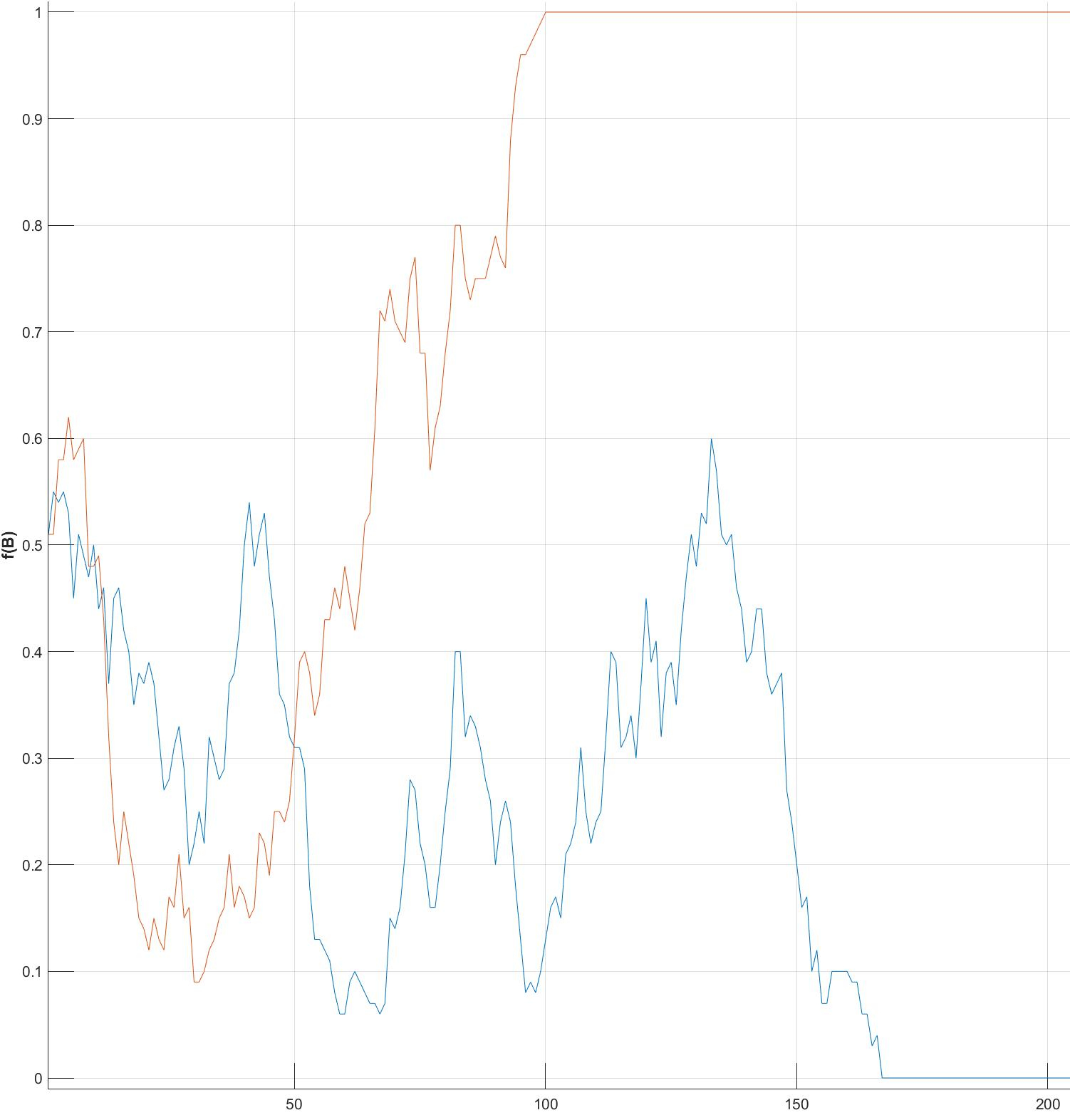
Genetic Drift of neutral alleles
(f(B)(0) = 0.5, N = 50, W0 = W1 = W2)
In the absence of natural
selection in a finite population, the frequency f(B)
of an allele is subject only to random genetic drift.
Replicate populations with N = 50 drift from an
identical initial f(B) = 0.5 to fixation and loss, with equal expectation,
respectively, in 100 ~ 200 generations. In the example, one
population f(B) drifts to q < 0.1 before
drifting to fixation, while the other drifts twice to q
> 0.5 prior to loss. The trajectories are random: careful
inspection would show that the count of positive
and negative changes of f(B) over time are about
equal, whereas the magnitude of dq
in either follows the normal distribution.
Text material © 2024 by Steven M. Carr